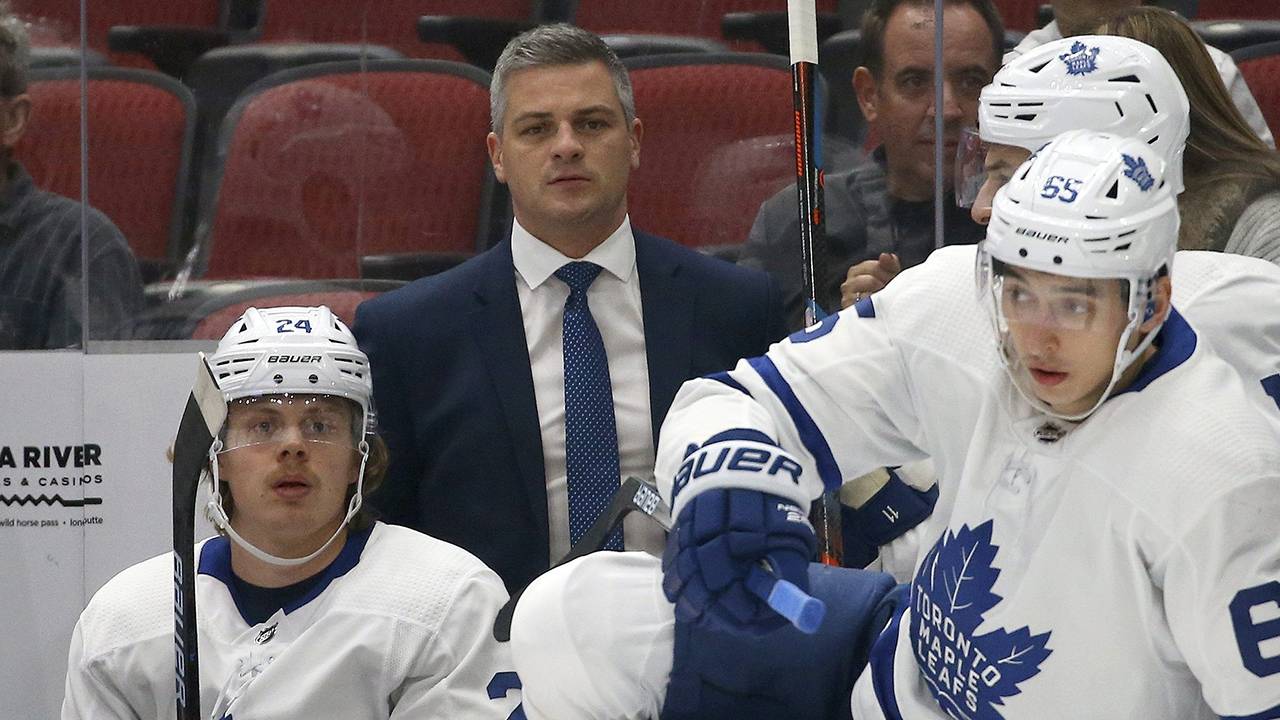TORONTO — Kasperi Kapanen has said some things.
We all have, of course, but as the 23-year-old Toronto Maple Leafs winger reflects back on his days as an aspiring NHLer he acknowledges that he may have occasionally spoken out of turn with his coach in the American Hockey League.
You know, the same coach who now stands behind the Leafs’ bench: Sheldon Keefe.
“I should have just shut my mouth sometimes,” Kapanen said in a recent interview. “During the game the emotions are high and I might have said something back sometimes.”
He’s quick to point out that it never went too far.
That in those moments where the heat was turned up highest it was always two fiery guys who were chasing the same outcome, rather than two people locked in an adversarial relationship.
[snippet id=3816507]
The word “stubborn” comes to mind — especially as it relates to the 2014 first-round draft pick who endured three seasons of yo-yoing between the AHL and NHL before finally establishing himself as a full-time Maple Leaf.
“We certainly weren’t shy about telling each other how we felt,” Kapanen said. “Sometimes I might have kind of stepped over the line a bit, but I think it just shows how comfortable we were with each other and we could kind of tell each other anything. Sometimes it’s tough love.
“We’ve both got some strong personalities, but that’s in the past and we’re doing good now.”
In Keefe’s eyes, there’s been some natural maturation from the player but also a dramatic change in his working conditions.
Most of the friction derived from Kapanen’s desire to reach the NHL as soon as possible, and that decision was not in either man’s hands. All Keefe could do was try to help grow Kapanen’s game to the point where he forced the organization’s hand — which he eventually did in the second half of the 2017-18 season.
“A big part of it, first of all, is that nobody really likes to play in the American League,” Keefe said. “Particularly players of that calibre and that talent. That pedigree. They want to be in the NHL fast so when it’s not happening you’re not always getting the best version of that player when they come to the rink every day.
“That’s a big challenge and that was one for Kappy.”
What he sees now is a player who consistently exudes good energy and works diligently at his craft. He’s a bit of a high-quality utility man that can help plug holes up and down the Leafs lineup, as evidenced by the fact he’s already topped 100 minutes at 5-on-5 this season with four different forwards: Alexander Kerfoot (187:57), John Tavares (160:15), Jason Spezza (156:01) and Pierre Engvall (103:51).
Kapanen can also contribute on both specialty teams and has elite speed, which is why he would be extremely difficult to part with if the Leafs decided to deal from their surplus of forward depth in order to acquire defensive help or a backup goaltender ahead of the Feb. 24 trade deadline.
[snippet id=4745221]
The past with Keefe, warts and all, comes with benefits. A coach still adjusting to life in the NHL already knows what buttons to push. And he’s seen Kapanen quietly put together a productive stretch with nine points to show for his last 10 games.
“There’s a history there. There’s, I hope, some trust in it,” Keefe said. “But also you have information — you’re not filling as many gaps in terms of what a player’s been through and what their personality might be and what they might respond to.”
Kapanen made a noticeable impact during Thursday’s 2-1 shootout loss to Calgary by pushing the pace and matching his season high with four shots on goal. His legs felt good and he nearly ended the game in overtime before getting denied on the doorstep by Flames goalie David Rittich.
He also finished a couple checks, which is a point of continued emphasis. The Leafs aren’t a particularly physical team but Kapanen sees that as one of the key elements to his own game.
“This season I haven’t been using my body as much as I should maybe. So, I’m kind of finding it right now,” he said. “I think I just need to get a little pissed off — get a little pissed off and throw the body around.”
As for what fuels that competitive edge?
He tries to summon it from within, rather than, say, looking to take a hit from an opponent.
“It’s mostly probably me just not scoring or just not making any good plays,” Kapanen said. “That’s usually what gets me upset.”
And, with time, he’s learned not to send any of that extra emotion in the direction of his coach.
[relatedlinks]









